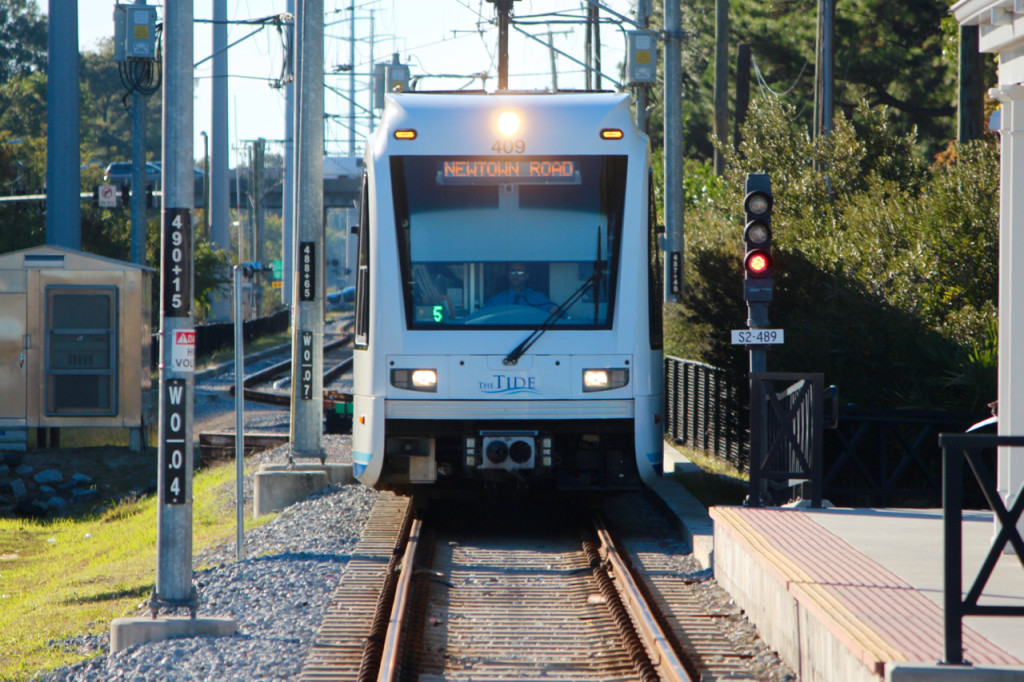
VIRGINIA BEACH — Virginia Beach is far more diverse than most citizens realize – in its history, natural assets and character. As we plan for the city’s future, we will be wise to grow and enhance those elements in sustainable ways. Bringing the Tide light rail to the Town Center area and beyond and developing a robust, public transportation system around it are major steps to shaping our city in the future.
Will those of us who live in the southern areas of the city ever use light rail? Perhaps not, but it will have positive, measurable impacts on our lives.
I have a personal interest in this city. I grew up here, and I plan to stay here. As Norfolk and Virginia Beach natives, my family moved to Virginia Beach just before the merger of the then small, resort city and the sprawling Princess Anne County in 1963. Since that time, the city has grown and changed from a seasonal tourist area and mostly rural farming community to become the largest city in the commonwealth.
Our economy has grown around three primary drivers: tourism, the military and agriculture. These combined elements are what have shaped Virginia Beach’s character, its strength and its desirability, and they each deserve our stewardship.
We have seen the pressures to meet suburban housing demand over the past 50 years consume lands that were once family farms. Today, we find farming and horticultural operations concentrated in the southernmost reaches of the city. Even still, agriculture remains the third largest segment of our city economy.
Bringing light rail to Virginia Beach will help prevent further sprawl. How? By planning where future business and residential growth will be concentrated. Just like our families, cities must grow and change with time. And, just like families, that growth must be anticipated and carefully planned.
Through months of study and with significant public input, the city has created a “strategic growth plan” that will concentrate 50 percent of all future growth into just 2 percent of the city’s land. The plan focuses largely on the Virginia Beach Boulevard and I-264 corridor, exactly where the former Norfolk Southern rail line will transform into a light rail transit system.
This will be the city’s growth corridor where mixed business and residential development will build upward, providing a lifestyle choice not currently available in Virginia Beach. Simultaneously, this will protect the suburban and agricultural lifestyles that we enjoy today. Beyond minimizing the pressures to grow ever further into the agricultural areas, the business and job creation around the planned growth areas will broaden the city’s tax base.
Light rail is part of the plan and represents an alternative to the car for those who desire a more close-knit, walkable living and working environment. It will attract creative, skilled workers and businesses that employ them, allowing our economy to grow in both traditional and new ways.
Today, homeowners pay 83.2 percent of all city real estate taxes. In numerous other areas of the country where light rail has accompanied comprehensive land use planning, the concurrent growth generates millions of new dollars in city taxes. In many cases, it is far beyond those necessary to build and operate the rail system. According to the city of Virginia Beach, new city taxes generated by the extension of light rail will not only pay for it but also support other public needs such as our schools, public safety services, libraries and parks.
Let’s face it: public transportation in Virginia Beach is lacking. Expanding bus services and laying more pavement alone won’t solve the problem.
The light rail line in Virginia Beach will be the spine of a system that will connect to our neighborhoods through enhanced bus services, bike and walking paths, Uber and cab services, and personal cars. The light rail extension will connect the two social and financial centers of Hampton Roads, serving business, entertainment and shopping commuters in the near term and ultimately connect to the airport, Old Dominion University, the naval bases, oceanfront, Greenbrier and beyond.
The decisions Virginia Beach voters will make at the polls on Nov. 8 to support the extension of the light rail system to Town Center will impact our growth patterns and economic vitality for years to come. Keeping this transportation system on track will benefit those who use public transit and those of us who may not.
It isn’t about the city we enjoy today but about shaping our city for the future. Our focus must be on ensuring we have a community for a lifetime that will sustain our families, children, grandchildren and beyond.
McClees is the executive director of Light Rail Now, Inc., the nonprofit organization running the Virginia Beach Connex campaign, and she also serves as executive director of Virginia Beach Vision, an organization founded by business and civic leaders to support various city and regional issues. Visit vbconnex.com for more information.
© 2016 Pungo Publishing Co., LLC


Why does the Pro Light position get to do all this FREE advertisement of their position? Where is the other sides editorial? Where are the facts? According to the HRTPO 82.5% of Hampton Roads commuters drove alone to work each day in 2015. . That percentage has increased each decade – 60% in 1980, 73% in 1990, 79% in 2000, and 81% in 2010. According to the 6.6 million dollar study Light Rail will NOT decrease Congestion if extended to the Oceanfront and will Increase it at grade level crossing.
We accept columns and letters to the editor via letters@princessanneindy.com or directly to me via jhd@princessanneindy.com. As long as personal attacks are avoided, comment on any side of an issue is welcome. I’ll also refer you to previous news coverage of the issue both in print and online. Thanks for commenting.